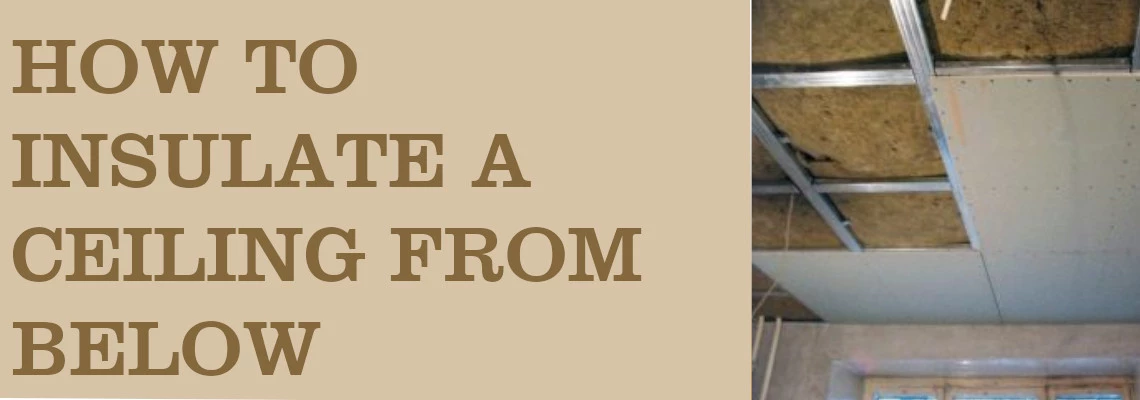
CHOOSING THE RIGHT CEILING INSULATION: TIPS AND CONSIDERATIONS*
Ceilings in the UK play a crucial role - they separate different levels within a home, creating distinct living spaces and helping to keep the warmth inside. Surprisingly, not all ceilings here are adequately insulated, which is a significant oversight. Heat naturally rises, causing the most heat loss near the ceiling. Uninsulated ceilings allow heat to escape easily, leading to higher gas bills. However, insulated ceilings reflect warmth back into the heated space, preventing this heat loss.
This article will focus on the importance of insulating ceilings, whether they divide living areas from attics or different floors in houses. By reading this article, you'll explore the best products for insulating ceilings beneath the attic.
HOW TO INSULATE A CEILING FROM BELOW
There are several reasons why insulating the ceiling from above might not be possible. One of them could be the absence of an attic, making it physically impossible to insulate it from the top. In such cases, the only option left is to explore the possibility of insulating the ceiling from below or its decorative surface.
While it's not impossible, insulating a ceiling from below isn't easy. In over 90 out of 100 cases, the prevalent ceiling finish in the UK comprises plasterboard coated with multi-finish plaster.
To insulate this type of ceiling without removing it, only two options remain:
 Insulation through blown-in insulation techniques.
Insulation through blown-in insulation techniques.
 Installing a secondary ceiling, which involves lowering the room's height.
Installing a secondary ceiling, which involves lowering the room's height.
Let's focus on the first method, which involves insulating the ceiling through blown-in insulation. This method is relatively non-invasive and involves creating several holes in the ceiling to introduce insulation using high-pressure equipment.
Blown-in insulation can take various forms, such as crushed mineral wool, expanded polystyrene (EPS) beads, or pieces of sheep's wool. This technique offers an effective way to insulate the ceiling without significant alterations to the room's structure.
The need to hire a highly specialised team equipped for blown-in insulation makes this method relatively costly, often surpassing the budget of many UK residents.
 Furthermore, there's no absolute guarantee that insulation will reach every uninsulated part of the ceiling. A prevalent issue occurs at spotlight locations where cables, carelessly installed by electricians, tend to disrupt the insulation process. These cables frequently act as obstacles, preventing the insulation from effectively reaching those areas.
Furthermore, there's no absolute guarantee that insulation will reach every uninsulated part of the ceiling. A prevalent issue occurs at spotlight locations where cables, carelessly installed by electricians, tend to disrupt the insulation process. These cables frequently act as obstacles, preventing the insulation from effectively reaching those areas.
The only way to check the correctness of the ceiling insulation would be using a thermal imaging camera, which effectively visualises heat losses.
When opting for interior ceiling insulation using the blown-in method, the only repair you'll likely need to undertake is fixing the access holes necessary for blowing in the insulation. However, increasingly, more companies are including this repair as part of their ceiling insulation service.
Pictures credit:ardor.construction
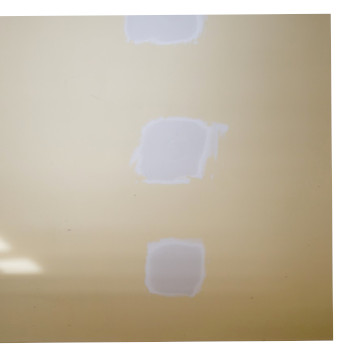
The second method of insulating the ceiling from the inside involves installing an entirely new ceiling below the existing one. In this approach, insulation is attached to metal or wooden frames before the installation of the plasterboard board.
This method unfortunately reduces the room's height by at least 100 mm. It's quite messy as it involves suspending the ceiling, requiring drilling, installing the plasterboard panels, and then carrying out the decorative finish, including multi-finish plaster and painting.
This method is quite time-consuming and involves multiple stages, but it allows for the use of various types of insulation materials.
One of the insulation materials that can be used for insulating the ceiling from below includes polystyrene, loft roll insulation, PIR boards, or high sound-absorbing stone wool.
HOW DO YOU INSULATE A CEILING WITHOUT REMOVING PLASTERBOARD?
CAN YOU ADD INSULATION TO EXISTING CEILING?
Getting rid of plasterboards can be quite messy and involves several steps like ordering a waste skip, disposing of the boards, and then buying and fitting new ones. To avoid the hassle and costs of this whole process, opting for a 2-in-1 product that handles all these tasks at once is a smarter choice.
To speed up the time-consuming process of ceiling insulation, more investors are turning to insulated plasterboards. These boards are attached directly to the existing ceiling using longer screws.
This approach is rapid, thermally efficient, and notably effective. About 6 out of 10 of our clients prefer purchasing such insulation products. Among the most frequently chosen materials are Unilin XT/TL, Celotex PL4000, or Kingspan K118.
BEST INSULATION TO INSULATE CEILING FROM BELOW / INSIDE
When insulating the ceiling from below or inside the room, there's a wide range of insulation materials to choose from. Here are a few:
EXPANDED POLYSTYRENE (EPS)
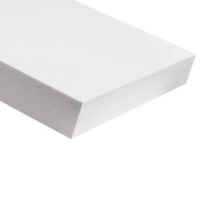 Expanded polystyrene tends to be the most cost-effective option for ceiling insulation. However, its thermal conductivity of 0.044 W/mK is relatively higher compared to competitive products like PIR (0.022 W/mK) or phenolic foam (0.019 W/mK).
Expanded polystyrene tends to be the most cost-effective option for ceiling insulation. However, its thermal conductivity of 0.044 W/mK is relatively higher compared to competitive products like PIR (0.022 W/mK) or phenolic foam (0.019 W/mK).
EPS is rigid, easy to cut, lightweight, and can be easily fitted between rafters. When insulating the ceiling from below, it's often applied entirely to the ceiling structure, forming a cohesive thermal layer.
PRODUCTS
MINERAL WOOL
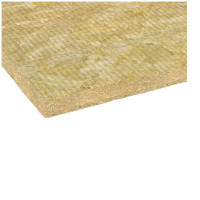 Mineral wool is a fantastic choice for insulating a ceiling from below while also providing excellent soundproofing.
Mineral wool is a fantastic choice for insulating a ceiling from below while also providing excellent soundproofing.
These products boast impressive acoustic qualities, usually around 100kg/m3, capable of reducing noise levels by an additional 20-30dB.
However, the main drawback lies in the necessity of using a thicker layer compared to materials like EPS or PIR due to its higher thermal conductivity of 0.034W/mK.
PRODUCTS
PIR RIGID BOARDS
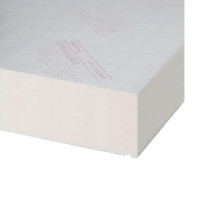 PIR boards are another popular choice for insulating ceilings from below. These insulation boards come with an additional aluminium foil layer, which is a significant advantage as it negates the need for a separate vapour control layer. The foil reflects heat, helping to maintain a consistent temperature in the room.
PIR boards are another popular choice for insulating ceilings from below. These insulation boards come with an additional aluminium foil layer, which is a significant advantage as it negates the need for a separate vapour control layer. The foil reflects heat, helping to maintain a consistent temperature in the room.
PIR boards are relatively easy to cut, as mentioned in the article 'How to cut PIR insulation boards.' With a thermal conductivity of 0.022 W/mK, they rank among the best available in the market.
The price of PIR boards is relatively low, and they are generally accessible in stores nearby, such as Wickes or B&Q.
During installation, these boards are commonly fixed with screws onto the existing ceiling, and then the plasterboards are installed beneath them.
PRODUCTS
PHENOLIC FOAM RIGID BOARDS
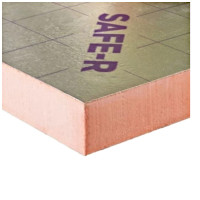 Phenolic boards, being also rigid boards, represent the most expensive option for ceiling insulation from below.
Phenolic boards, being also rigid boards, represent the most expensive option for ceiling insulation from below.
However, their cost aligns with the high-quality material and exceptionally low thermal conductivity, around 0.018 W/mK.
Similar to PIR boards, their dimensions are typically 2400mm x 1200mm, and their installation process is straightforward and quick.
These boards are manufactured by well-established companies in the UK market like Unilin or Kingspan, owing to their high-quality production and reliability.
PRODUCTS
BEST INSULATION PRODUCTS FOR CONCRETE CEILING
In the UK, concrete ceilings are becoming increasingly common. Concrete tends to be cold, so insulating it properly requires specific materials. This need for insulation is particularly crucial in underground garages, basement flats, and commercial spaces. These areas emphasise the importance of having insulation that's both effective and not overly bulky.
Phenolic boards, known for their exceptional R-value exceeding 5.00 m2K/W, stand out as the thinnest insulation materials on the market. They offer convenience during installation, are lightweight, and need only a few mechanical fixings for mounting.
Due to their superior thermal conductivity, phenolic boards are often the top choice for insulating concrete ceilings from below.
While phenolic boards offer great thermal insulation, their fire resistance might be lacking. As a result, there's a growing preference for entirely non-combustible materials capable of containing fires within a space.
The ideal solution involves insulation products with both good thermal properties and a decorative finish, reducing the need for additional finishing work post-installation. This is where two prominent companies, Rockwool and Knauf, come in with their insulation slabs covered in black tissue.
These highly sought-after products, especially for ceiling insulation in parking areas, are valued for their reliability and ability to meet strict fire safety standards.
PRODUCTS
Unilin SR/ST
Unilin SR/STP
Rockwool black tissue
WHAT IS THE BEST INSULATION BETWEEN CEILING JOISTS?
Most houses in the UK have wooden floors. They can be noisy because when we move around, the sound isn't stopped by anything under the floor boards. Sometimes, this makes the floor vibrate and, annoyingly, it can make creaky noises.
The spaces between floor joists in UK homes are often empty, with only a thin plasterboard acting as insulation. That's why insulating these types of floors is crucial. By insulating them, we tackle two problems: heat loss and excessive noise.
Typical floor joist dimensions in the UK are around 38 x 122 mm, meaning there's usually about 120 mm of space available for insulation material. In this case, a great choice is rigid rock wool with a density of 60kg/m3 or 100kg/m3. This type of insulation can reduce noise by at least 20 dB. Additionally, having an A1 fire classification is a significant advantage, providing protection against rapid fire spread.
The installation is incredibly simple and involves cutting the insulation to fit and laying it between the floor joists.
There are many other insulation products designed for insulating between floor joists. However, both PIR and Phenolic insulation may not provide the same acoustic properties as rock wool with a density above 60kg/m3.
CONCLUSION
In conclusion, when it comes to insulating ceilings, it is paramount to select products that offer excellent acoustic properties and fire resistance. Especially in spaces like garages, opting for ready-made products that provide both insulation and a decorative finish, such as black tissue-covered rock wool, can significantly enhance both functionality and aesthetics. This not only ensures effective soundproofing and safety but also adds an appealing aesthetic touch to the space.
For residential ceiling applications, a good choice would be PIR or polystyrene boards. However, in cases where space is limited, you must be prepared for higher costs associated with purchasing phenolic boards.
Related articles:
UNLOCKING THE POWER OF SOFFIT INSULATION: MAXIMISING ENERGY EFFICIENCY AND FIRE SAFETY
FOIL INSULATION: TO GAP OR NOT TO GAP? THAT IS THE QUESTION!
ROCKWOOL® HEAVY DENSITY INSULATION
THE UGLY TRUTH ABOUT ROCKWOOL AS A SOUNDPROOFING MATERIAL?
HOW TO CUT FIBREGLASS INSULATION
ROCKWOOL INSULATION: IS IT SAFE FOR YOU AND YOUR HOME?
7 EASY TIPS FOR INSTALLING FOIL FACED INSULATION THE RIGHT WAY
MINERAL WOOL INSULATION. THE UGLY TRUTH?
*The content published on Insulationgo blog serves solely for informational and educational purposes. While Insulationgo LTD endeavors to maintain the accuracy and timeliness of the content, we do not accept responsibility for any errors or omissions.
The information shared on this blog does not constitute professional advice and should not replace consultation with relevant experts. Prior to making any purchasing decisions or taking action based on this information, it is highly recommended to directly contact the product manufacturer for verification and to ensure suitability for your specific requirements.
Descriptions, drawings, photographs, data, proportions, weights, and measured values provided here may change without prior notice and do not establish the guaranteed contractual quality of the products. The recipient of these products holds the responsibility to comply with proprietary rights, existing laws, and legislation.
Using this blog implies acknowledgment and agreement that Insulationgo LTD cannot be held accountable for any damages, losses, or inconveniences resulting from the use or reliance upon the information provided. This limitation of liability extends to all users of the blog, including visitors, readers, and subscribers.











































































































